(Upload on November 28 2025) [ 日本語 | English ]
Mount Usu / Sarobetsu post-mined peatland
From left: Crater basin in 1986 and 2006. Cottongrass / Daylily
HOME > Lecture catalog / Research summary > Glossary > Geology
|
an earth science concerned with the solid earth, the rocks of which it is composed and the processes by which they change over time
mineralogy (鉱物学) |
|
|
Mobile belt (変動帯)/orogenic belt (造山帯) Orogenic movement (造山運動) Geosyncline (地向斜) an obsolete geological concept to explain orogens (developed in the late 19th and early 20th c.) before the plate tectonics theory was envisaged |
VLBI, very long baseline interferometer (超長基線電波干渉法)
the measurements of plate movement direction and speed GPS, global positioning systemEx. Pacific plate: moving to Japan Islands at 10 cm/yr |
Heat flow measurement (地殻熱流量測定)1947 Peterson on the Albatross: first try to measure heat flow1952 Ravelle & Maxwell: success in heat flow measurement
1944 Bullard, Revelle and Maxwell: developed the apparatus
T = thermal conductivity, measured by difference of temperature between two depths (in the field) Continental drift (大陸漂移)Prior to proposed continental drift hypothesis by Wegener 1596 Ortelius, Abraham (1527-1598)1756 Lilienthal, Theodor Christoph 1801/1845 von Humboldt, Alexander (1769-1859) 1858 Snider-Pellegrini, Antonio the shapes of continents on opposite sides of the Atlantic Ocean fit together Wegener, Alfred (1880-1930, Germany)1912 proposed continental drift hypothesis (大陸漂移説) Hess, Harry Hammond (1906-1969)Dietz, Robert Sinclair (1914-1995) Blackett, Patrick Maynard Stuart (1897-1974, England), paleomagnetism 1947 a theory to account for the Earth magnetic field as a function of its rotation, trying to unify the electromagnetic force and the force of gravity - rejected by himself 1948 Nobel Prize (physics) by cloud chamber, positron and its pair Dynamo theory (ダイナモ理論)Larmor, Sir Joseph (1857-1942), England 1919 a mechanism that sun generates a magnetic field core in earth = liquid iron → dynamo Seafloor spreading (海洋底拡大説)Hess, Harry Hammond (1906-1969), American geologist 1962 (1960 pre-print) Hess: geopoetry Nature of great oceanic ridges. The 1st International Oceanographic Congress (New York, August 31-September 12 1959). Washington. American Association for the Advancement of Science (A). pp. 33–34 Dietz, Robert Sinclair (1914-1995), American marine geologist1961 Dietz RS: proposed seafloor spreading Continent and ocean basin evolution by spreading of the sea floor. Nature 190: 854–857 Vine, Frederick John (1939-), English marine geologistMatthews, Drummond Hoyle (1931-1977), British marine geologist 1963 Vine & Matthews (Nature 199: 947–949)
developed to Vine-Matthews-Morley hypothesis (VMM) |
Wilson, John Tuzo (1908-1993), Canadian geologist 1965 proposed transform fault or boundary (トランスフォーム断層) a major plate boundary where two plates move past each other horizontally 1966 (and thereafter) Cox and others tape recorder model
1968-1983 Ship Glomar Challenger Theory of plate tectonics (プレートテクトニクス)= lithosphere comprises a number of large tectonic plates that have been moving a few centimeters per yearDef. (tectonic) plate: composed of the oceanic lithosphere and the thicker continental lithosphere, relatively rigid and floats across the ductile asthenosphere beneath Three types plate boundaries
Divergent (発散型): pulling apart from each other 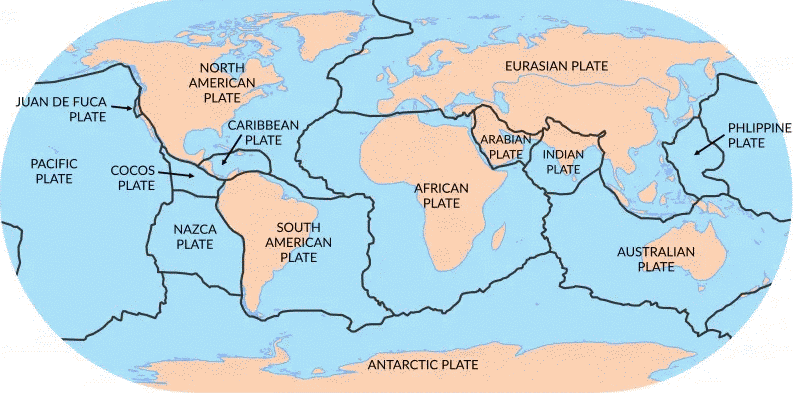 Fig. Distribution of major tectonic plates on the earth |
|
a branch of geology concerned with the study of rock layers (strata) and layering (stratification) Table. Geological timescale, based on Family Waagenophyllidae (Kanmera 1973, 勘米良亀齢) Era_______Fusulinida band (フズリナ属帯) Triassic Lower: - Permian
Upper: Palaeofusulina, Codonofusiella
Upper: Triticites 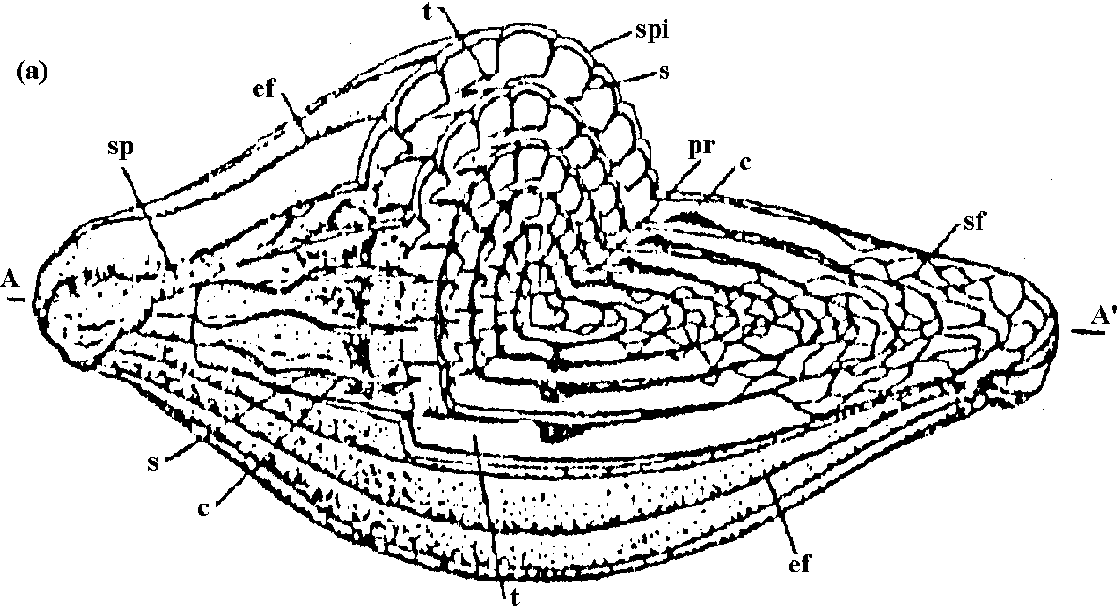 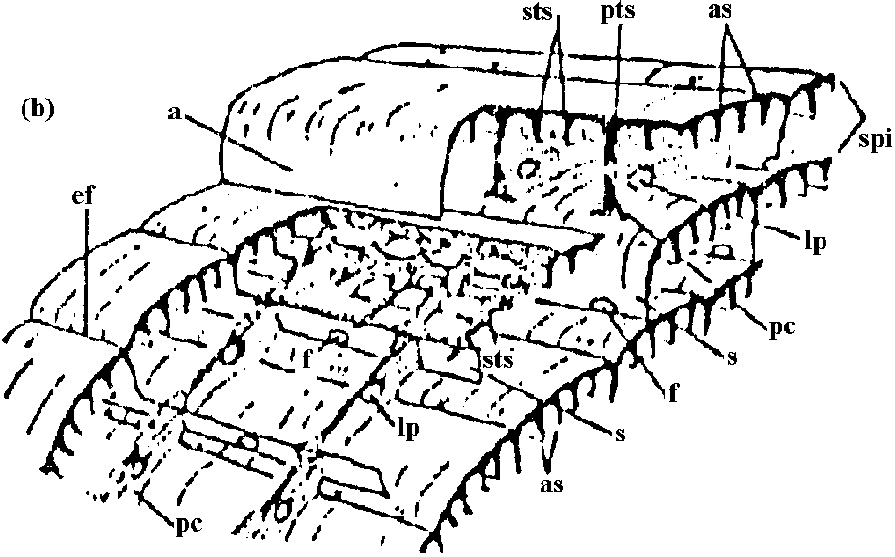 Fig. 1.76. Morphology of Fusulinidae (紡錘虫). (a) Fusulinella. (b) Yabeina. A-A': axis of coiling, pr: proloculus, spi: spirotheca, s: septa, sp: septal pores, sf: septal fluting, c: chomata, t: tunnel, ef: external furrow, pts: primary transverse septula, sts: secondary transverse septula, as: axial septula, a: antetheca, pc: parachomata, f: foramina, lp: lateral passage. (Modified after Maklukho-Maclay et al. 1959). |
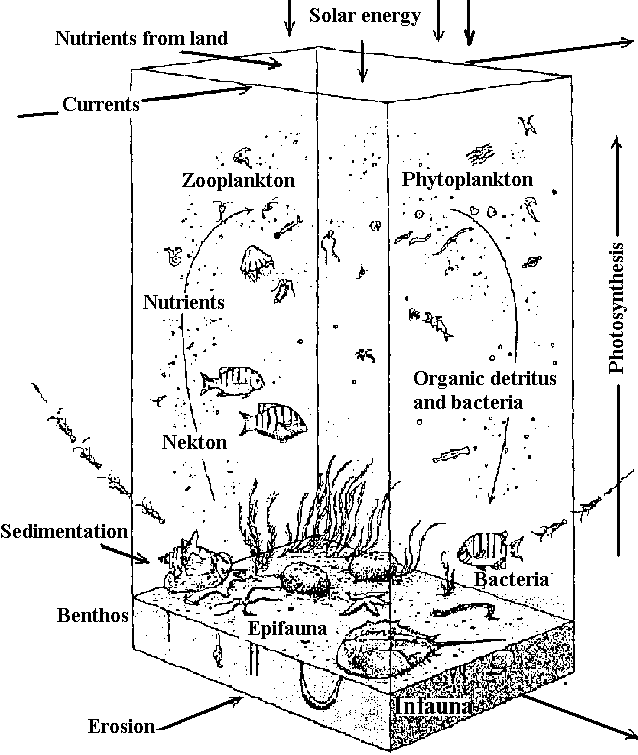 Fig. 3.9. Interrelationships of life habits within the marine ecosystem.
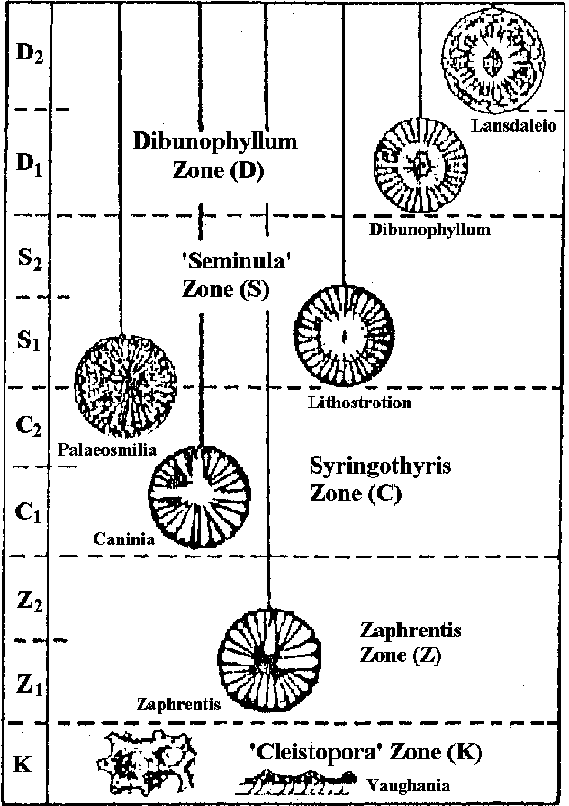 Fig. 5.34. Carboniferous coral zones and brachiopod/coral subzones, British Isles (Stamp 1950). An introduction to stratigraphy British Isles. Subzones: K1: Productus basus, K2: Spiriterina octoplicata, Z1: Spirifer tornacensis, Z2: Zaphrenus konincki, C1: Caninia cylindrea, C2: Palaeosmilia φ, S1: Caninia bristolensis, S2: Productus corrugato-hemisphericus, D1: Dibunophyllum bourtonense, D2: Lonsdaleia floriformis. (Yaughan 1905) |
Rock (岩石・岩)Table. Major minerals that form volcanic rocks. The chemical equiations are simplified. All the minerals except silica minerals forms various degrees of solid dispersion.colorless mineral (無色鉱物) plagioclase (斜長石)
CaAlsSi2O8 (anorthite 灰長石), An [→ abbreviation of terminal component] potassium feldspar (カリ長石) KalSi3O8, Or feldspathoid (準長石)
NaAlSiO4 (nephelite 霞石), Ne silica minerals (珪酸鉱物) SiO2 (quartz 石英・tridymite 鱗珪石・cristobalite 方珪石) |
Colored mineral (有色鉱物)
peridotite (橄欖岩) (Mg, Fe)2SiO4 pyroxene (輝石)
(Mg, Fe)SiO3 (orthopyroxene 斜方輝石) amphibole (角内石) (Ca, Mg, Fe, Na, Al)7-8[(Al, Si)4O11]2(OH)2 biotite (黒雲母) K(Mg, Fe)3[(AlSi3)O10](OH)2 magnetite (磁鉱鉱) Fe2+, Fe3+2O4 (incluidng a small amount of Ti, Mn, etc.) volcanic glass (火山ガラス)silicate glass containing Mg, Fe, Ca, Na, K, Al, etc. lava (溶岩) |
|
rock = igneous rocks + sedimentary rock + metamorphic rock |
|
formed through the cooling and solidification of magma or lava = intrusive rock (貫入岩) + extrusive rock (噴出岩) Intrusive rock: formed when magma penetrates existing rock, crystallizes, and solidifies underground to form intrusions Extrusive rock: derived from magma that was poured out or ejected at the earth surface |
Granite (花崗岩)coarse-grained (phaneritic) intrusive igneous rock composed mostly of quartz, alkali feldspar, and plagioclase |
|
formed by metamorphism (the transformation of existing rock to new types of rock)
Ex. phyllite (千枚岩), schist (片岩), gneiss (片麻岩), quartzite (珪岩) and marble (大理石) Serpentine belt (蛇紋岩帯)Serpentine (蛇紋岩)A rock composed of one or more serpentine group mineralsSerpentine group mineralsMinerals in this group are formed by serpentinization, a hydration and metamorphic transformation of ultramafic rock from mantle.Serpentine soil
Plants in serpentine beltsSerpentine zone supports diverse wildflowers that are occasionally rare or endangered species, such as Primula takedana and Berberis amurensis var. japonica.Species sepcifically established in serpentine zones can be used as ecological indicator Plants in the serpentine zone of Teshio, northern Hokkaido Achillea ptarmica L.
var. macrocephala (Rupr.) Ohwi (エゾノコギリソウ) |
Allium schoenoprasum L. var. schoenoprasum (エゾネギ) Berberis amurensis Rupr. var. japonica (Regel) Rehd. (ヒロバノヘビノボラズ*) Clematis fusca Turcz. (クロバナハンショウヅル) Drosera rotundifolia (モウセンゴケ) Euphorbia sieboldiana Morr. et Decne. (ナツトウダイ) var. montana Tatew. (ヒメナツトウダイ*), syn. E. tsukamotoi Honda Galium verum L. var. trachycarpum DC. (エゾノカワラマツバ)Japonolirion osense Nakai (テシオソウ) Picea glehnii Masters (アカエゾマツ*) Pinus pumila (ハイマツ) Primura takedana Tatew. (テシオコザクラ*) Primura takedana Sanguisorba tenuifolia var. alba (ナガボノシロワレモコウ) Swertia tetrapetala (チシマセンブリ): highly variable (small in the observed area) Thymus quinquecostatus Celak. (イブキジャコウソウ*) Veronica schmidtiana
ssp. senanensis Kitam. et Miura var. yesoalpina (エゾミヤマクワガタ) [ Field training on integrated environmental research ] |
|
Three processes: sedimentation = weathering + migration + deposition Regolith (レゴリス): a blanket of unconsolidated, loose, heterogeneous superficial deposits covering solid rock, e.g.,
pedolith (ぺドリス) ≈ soil: a surface formation that has undergone one or more pedogenic processes
upper saprolite: completely oxidized bedrock
tephra and lava (火山噴出物) |
Limestone (石灰岩): CaCO3, a white or light grey rock formed from the shells of sea animals Formation:
Biological processes: accumulation of shells, corals, algae and other marine organisms rich in calcium carbonate. Over millions of years, these remain compact and solidify into limestone |